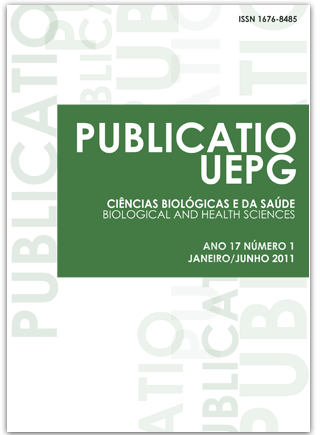ANALYSIS OF BEHAVIORS AND POSITIONS OF THE ODONTOLOGY ACADEMICS WITH A PREDISPOSITION TO THE CARPAL TUNNEL SYNDROME
DOI:
https://doi.org/10.5212/publicatio%20uepg.v17i1.3449Keywords:
Carpal Tunnel Syndrome. Odontology. DORT. Ergonomics. Prevention.Abstract
Carpal Tunnel Syndrome (CTS) is characterized by nerve compression that affects the upper limbs that can be caused by repetitive movements of the fist and fingers, extreme flexion and extension of the fist, forced contraction of the tendon that dislocate to the tunnel, static muscular work, vibrations, bad positioning during work activities and not in conformity to ergonomic patterns. These factors are common among Odontology professionals as many professionals present a loss of fist and fingers functionality, compromising the care of patients. The aim of this study is to detect and to analyze the methods and approaches used by Odontology professionals to carry out their activities and to guide them about the prevention of future STC with the distribution of informative material on stretching of the upper limbs. Questionnaires were applied to eighty dentistry students between the ages of 20 to 25 of the last year of the dentistry course from the UEPG and CESCAGE universities. These students were taking the disciplines of integrated clinic. In the sample, 45% (n = 36 students) were male and 55% (n = 44) were female. The variable in relation to the practice one of another professional activity had been searched, the symptoms mentioned in the questionnaire used in the study (Appendix I), in addition to specific tests (Tínel and Phalen). After treatment of the statistical data and follow up in the practical classes, it was observed that the STC symptoms prevail in female students with a predisposition to the syndrome. This can be explained as other activities were carried out at the same time of the practical activities and the ergonomic risk according to a check list for simplified evaluation of the risk of Repetitive Strain Injuries/Osteomuscular Disease Related of the Job occurrence. The results indicate a very high risk of RSI/DRJ.
Downloads
Issue
Section
License

Este obra está licenciado com uma Licença Creative Commons Atribuição 4.0 Internacional.
Esta licença permite que outros distribuam, remixem, adaptem e criem a partir do seu trabalho, mesmo para fins comerciais, desde que lhe atribuam o devido crédito pela criação original. Este posicionamento está de acordo com as recomendações de acesso aberto da Budapest Open Access Initiative (BOAI).


